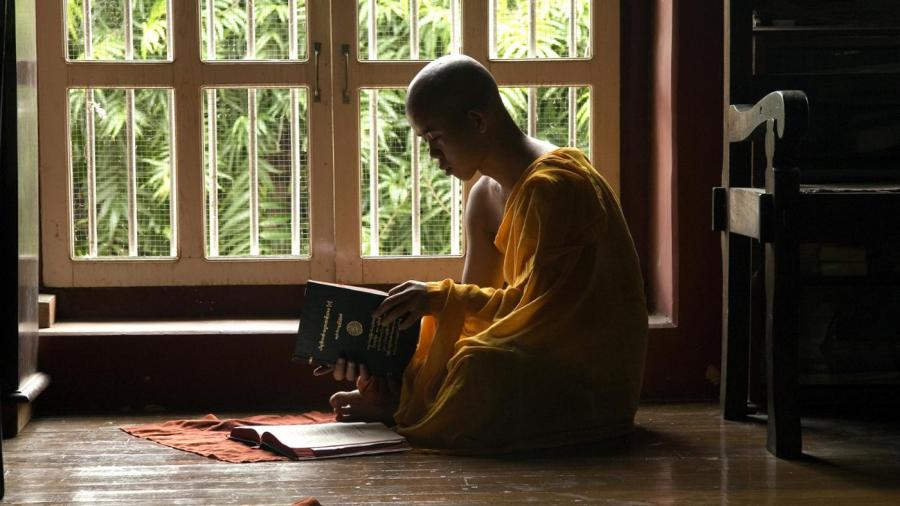What Is the Holy Book of Buddhism?

The Buddhist holy book is known as the Tipitaka. The Buddha’s teachings were preserved in the Pali Canon, which acts as an extensive analytical record written in Pali, the Buddha’s native dialect. Pali is considered the classical language of Buddhism, and the documents preserved in Pali make up the Tipitaka as well as other Buddhist documents such as the Atthakatha, Tika, Anu-tika and Madhu-tika.
Several months after the Buddha’s death, a period known as maha-parinibbana, 500 scholars and disciples of the Buddha who had attained arahant-phala, Buddhism’s highest level of sainthood, convened to discuss the preservation of the Buddha’s teachings. The scholars formed The First Council, a group whose purpose was to preserve the Buddha’s teachings from distortion and unscrupulous revisions. The council then collected and arranged the Buddha’s numerous teachings into a volume now known as the Tipitaka.
According to Pariyatti, a Buddhist non-profit organization, Tipitaka literally translated means “three baskets.” Similarly, the Tipitaka is divided into three divisions: Vinaya Pitaka, Sutta Pitaka and Abhidhamma Pitaka. The Vinaya Pitaka explains the rules of conduct for the monastic order. The Sutta Pitaka is a collection of discussions on various subjects by the Buddha. Last, the Abhidhamma Pitaka contains the Buddha’s teachings on the relationship between mind and matter and the principles to transcend problems with each.





